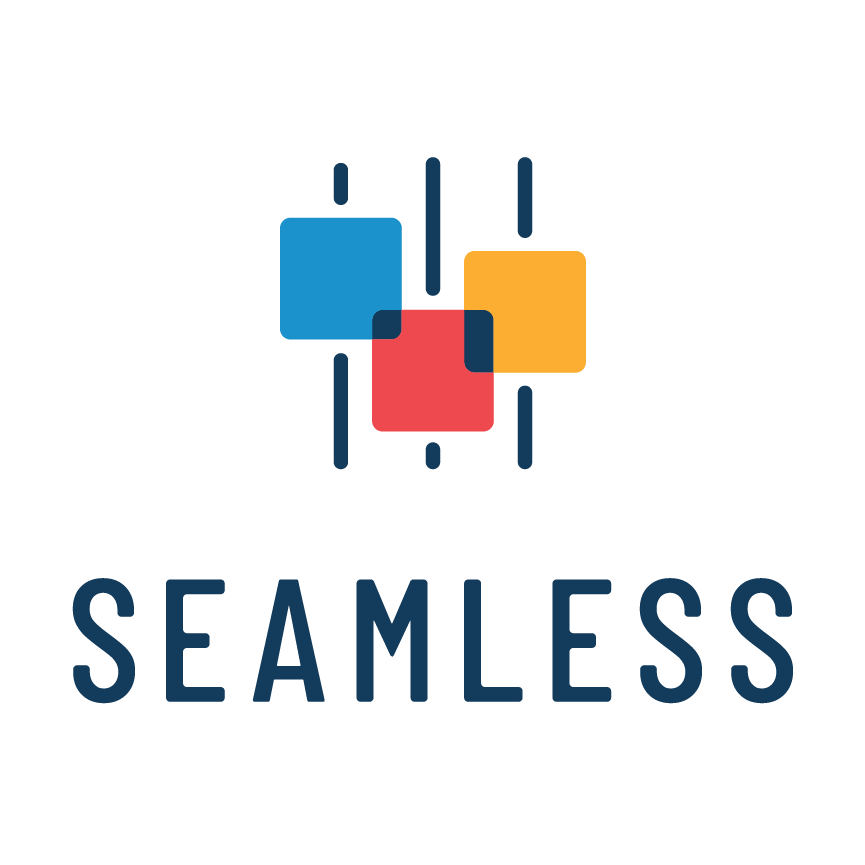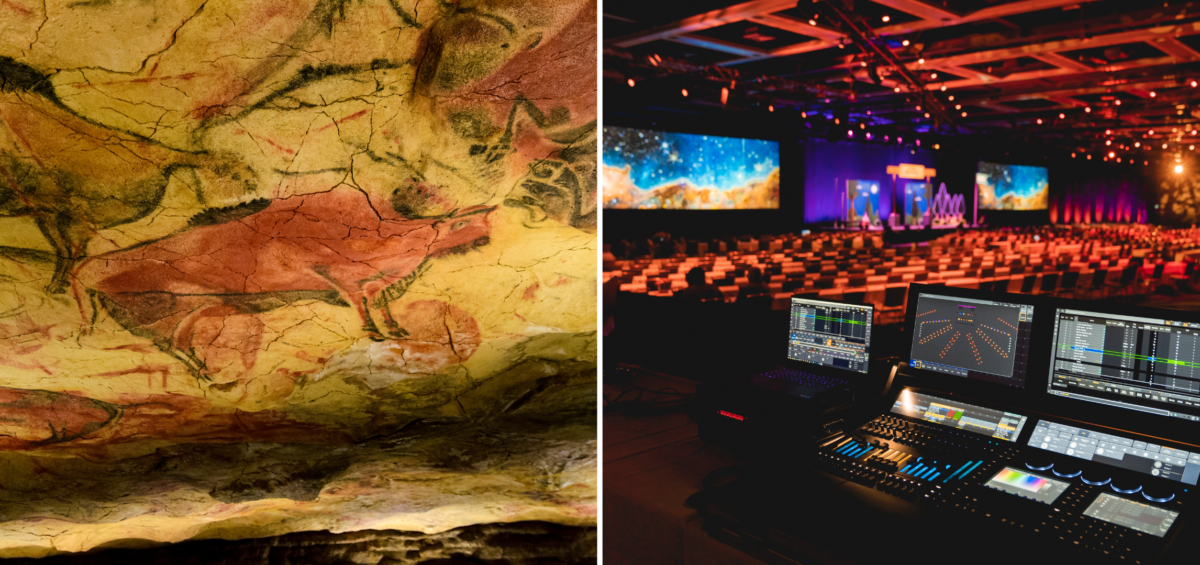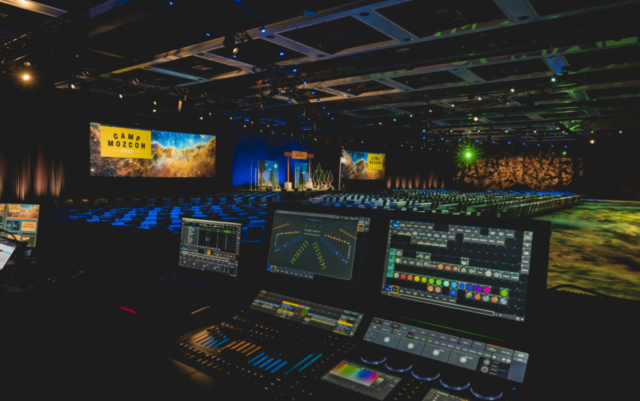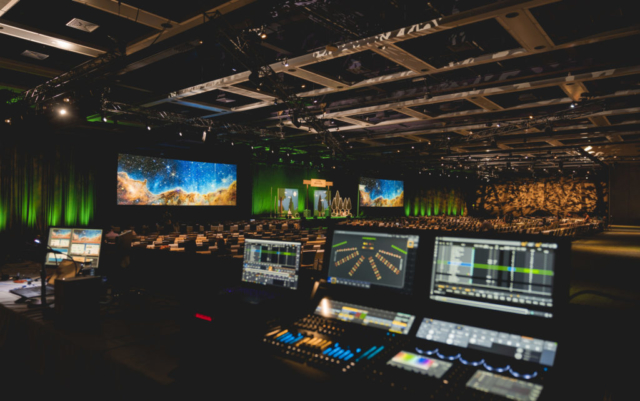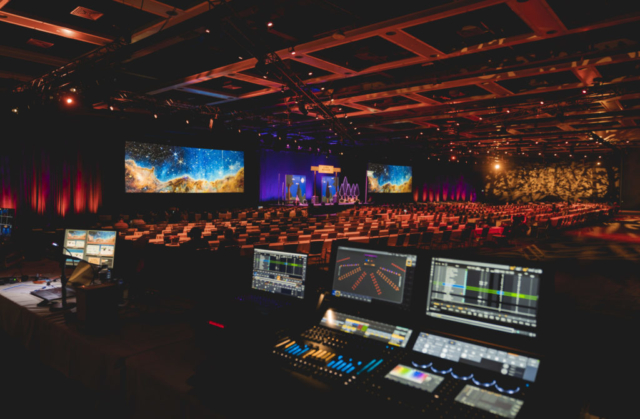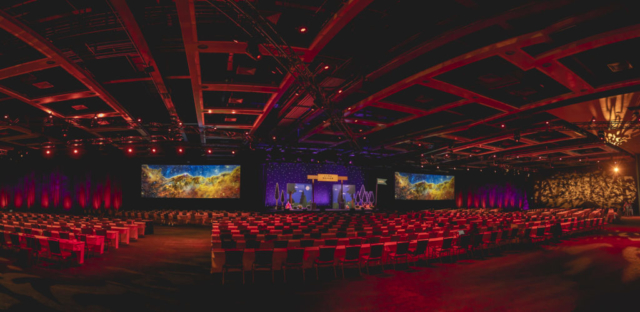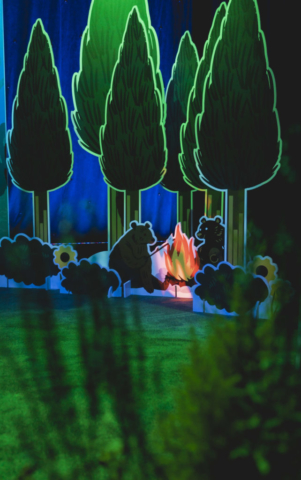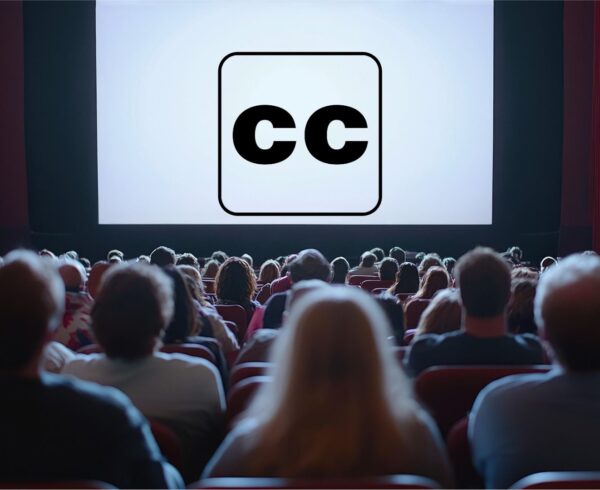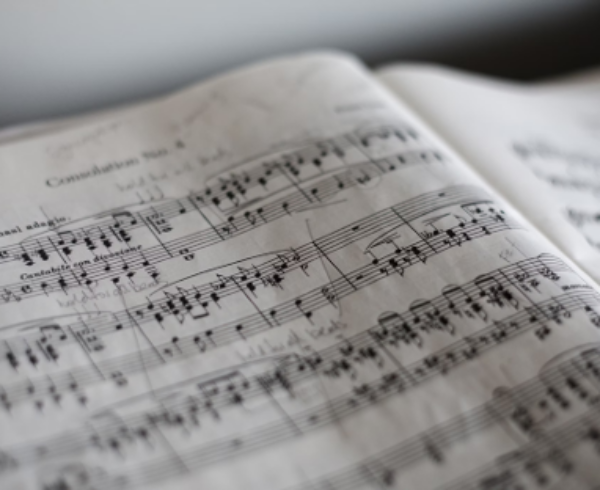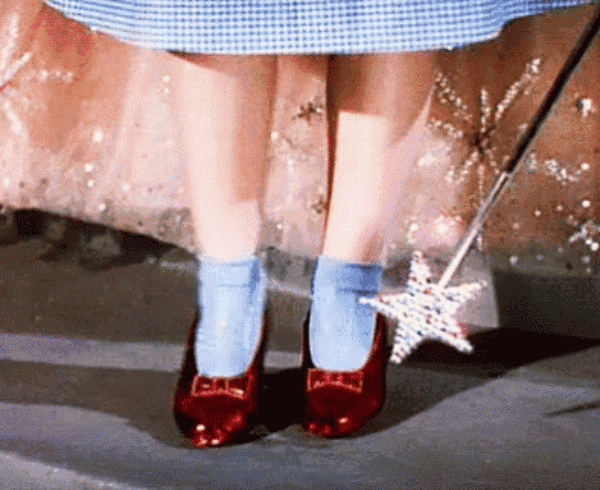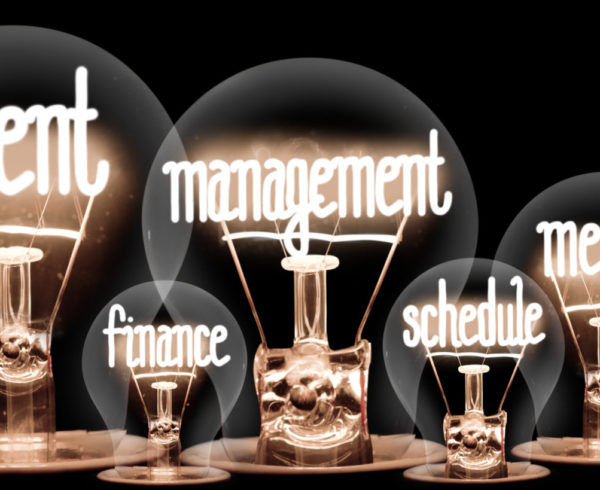Moment of Honesty: Budgets matter.
We prefer not to talk about it; nobody wants to be the killjoy that brings up budget concerns when everyone else in the meeting is letting their creative juices flow. But “creative juices” get expensive and there’s a lot to consider about events outside of creative expression.
We need to look at function, safety, attendee experience, etc. but it’s so easy to get caught up in the “cool stuff” like custom set pieces or grand entrances because they make such a huge impact.
Custom set pieces can be a showstopper. They can also be as expensive and take months, or even years, to fully design, test, and build.
In the real world, we are almost never working with years to plan and a blank-check budget. That doesn’t mean your AV company can’t wow you.
One of our favorite techniques to create impact for attendees is actually one of the oldest tricks in the book. It’s so old that it goes back to the days of cave paintings.
Prehistoric production value may not seem like it has a lot of relevance when we’re talking about corporate event design, but hear us out on this one.
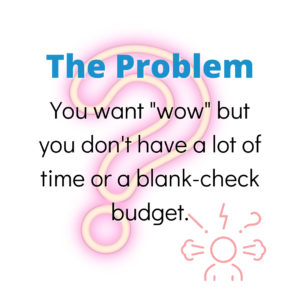
To get that same impact in a more time and budget-friendly way, we like to lean on the power of light.
Justin, the Pyro Guy (not his “official” title), got surprisingly poetic when we asked him for his thoughts on light and how it affects people.
He wrote:
“Think about some of the most memorable experiences in our lives: Watching a sunset, noticing the pink, orange and blue sky during a late fall evening, or a flash of lightning during a spring thunderstorm. What about the intense heat caused by the sun mid afternoon during the summer? Can you remember the glow of Christmas lights in December, or the flash of bright colors of fireworks for independence day? All these memories are created by a lighting source.”
Light can emotionally impact the viewer, create lasting memories, and direct focus. Digital light allows us to control those moments using changes in color, intensity, movement, and direction – all at the touch of a button. Combine that with transparent, translucent, and reflective set pieces and you have the potential for real magic.
Keep in mind, your set doesn’t necessarily end where your stage does. Light easily goes where props and decor can’t, so don’t be afraid to ask your AV company about ways to incorporate the ceiling, walls, and even floor into your design if that sort of immersive experience feels right for your event.
Notice we said “if.” It may not. This is a great example of where function becomes relevant.
Surrounding attendees with the effect makes them a part of the experience, whereas keeping the effect on stage creates a clear delineation between the audience and the show and focuses the viewers attention to what is being presented.
Do you want to simply present something or do you want to create a whole experience?
That’s not a sales-y challenge, it’s a legitimate question your AV company should be asking you. To creating the ideal experience for your attendees, your AV company needs to know exactly what the client wants that experience to be.
Sometimes just presenting is the right answer, in which case the light stays focused on the stage and the presenters.
Sometimes you want a more immersive experience and would need to light the space in a different way.
There’s no right or wrong, there’s just what’s appropriate for the event. Both purposes can be served in a budget-conscious way by light.
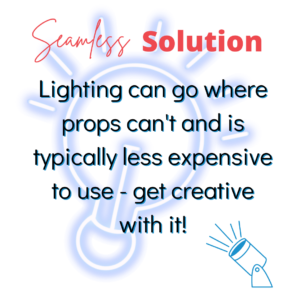
Most meetings we attend use a stage-centered or presenter-focused lighting scheme. We know what those look and feel like, but immersive and dynamic lighting happens less often.
Let’s look at our design for MozCon 2022 as an example.
The Seattle Convention Center is normally a wide open “blank slate” of a space, which gives us incredible flexibility of design. The client envisioned an immersive summer camp experience, so we incorporated the entire room in our lighting design by using the walls as a sort of projection screen.
To really play up the camp feel, we used light to create dancing shadows like sunlight through trees. We surrounded attendees with that moving light.
It looked good, but we could do better. So we took it one step further and morphed the color of that light throughout the day to match the way sunlight changes outside.
The choice to use light to reflect those changes rather than an evolving backdrop meant that we could embrace the entirety of the space. That choice didn’t mean we abandoned physical props entirely, though. For our night time look, the stars came out thanks to a starlight cyclorama, which we added a moon projection to. We also lined set pieces with strategically placed reflective paint to catch the light and make things pop.
Attendees got bright sunny days and starry nights filled with campfire stories – and they never left the room!
Movement and light brings attendees into the world of the event, in this case to summer camp with a few thousand of your closest friends.
We used modern technology like digital programming, projectors, and a cyclorama to bring the drama (somebody make that phrase into a t-shirt) and impact for this audience – but think about the examples Justin so poetically gave us. Most of those impactful moments came from a much simpler, natural light source.
Let’s loop back around to that “prehistoric production” we talked about at the beginning.
According to archeological research, the artists who created cave paintings and carvings did the same thing we did for MOZCON – surround their audience with movement and light in order to set the stage.
These ancient carvings and paintings were designed, according to experts, to be viewed lit by fire – a light source that would have flickered as it lit the pieces. The artists took advantage of tiny imperfections in the walls, incorporating them into the pieces in layers. When lit by moving fire, the effect created the illusion of movement.
In other words, ancient artists used dynamic lighting combined with some strategic practical effects, to create an immersive experience that transported the viewer into the world of the story.
Sound familiar?
Turns out, people have been using dynamic lighting and sets to create immersive audience experiences for about 23,000 years. Earlier we said it was one of the oldest tricks in the book, but it’s actually older. Use of dynamic lighting to set the stage pre-dates writing by about 17,000 years! How cool is that?
If you’re envisioning an immersive and impactful experience for your audience, don’t be afraid to think like a caveman. You might be surprised how effective a little dynamic light can be.
Sign up for our newsletter to get more ideas, insights, and insider info!
